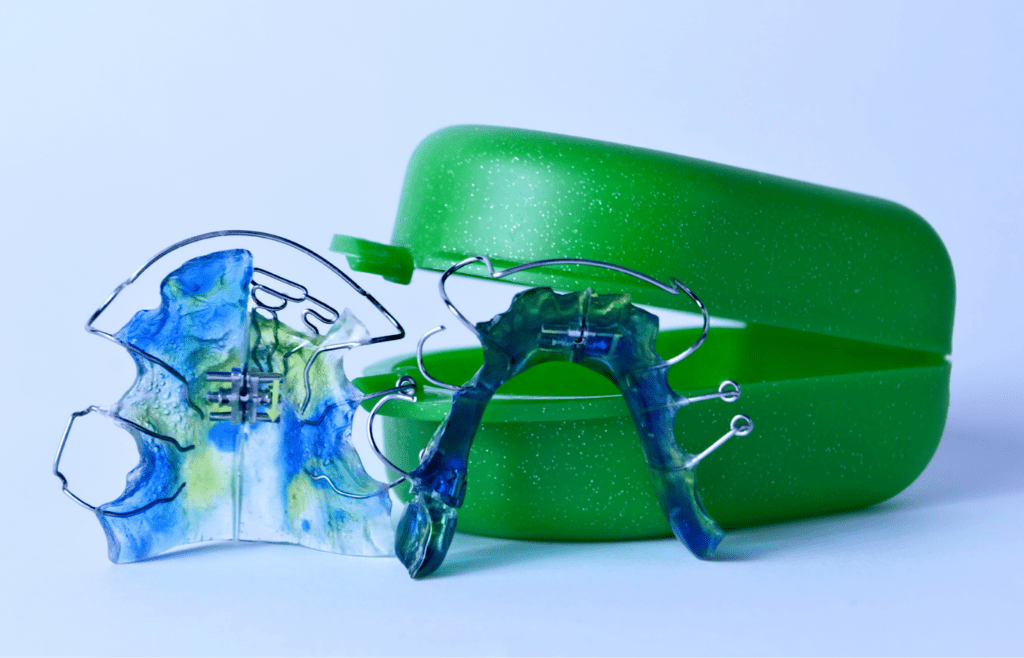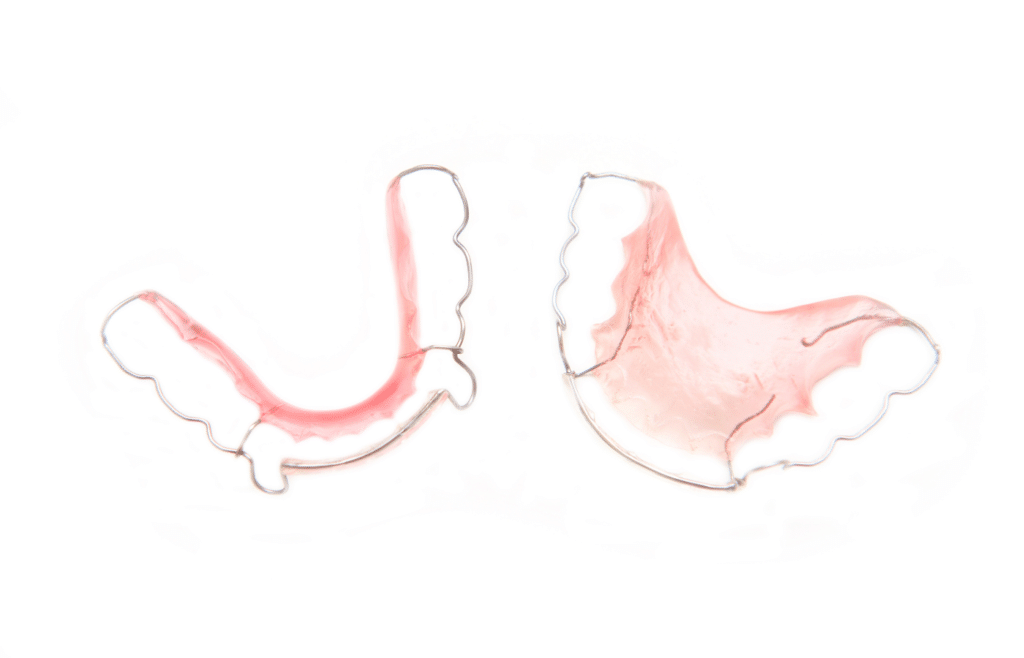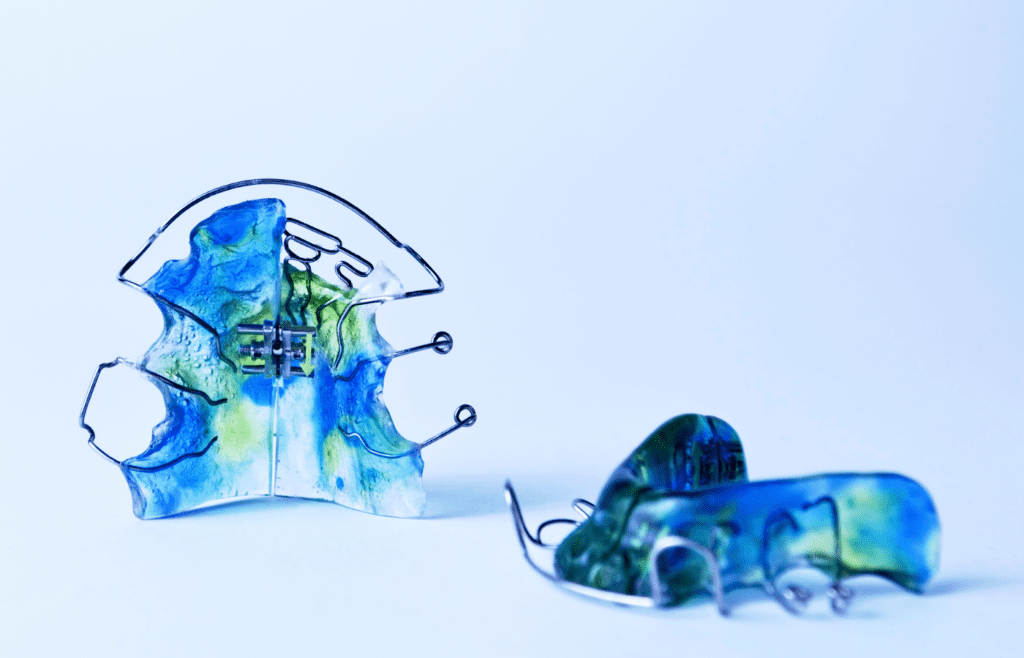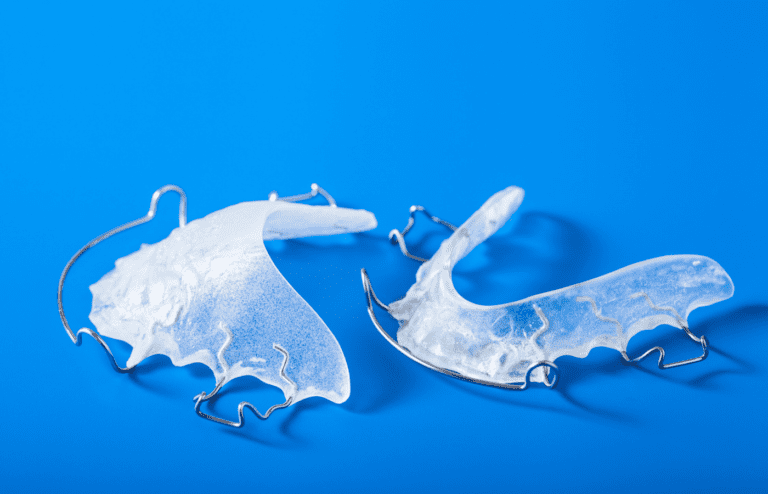With a ten-year-old son and an eight-year-old daughter, we recently entered the exciting (and expensive!) world of orthodontic treatment.
My main thought is: Why didn’t anyone tell me to start saving for this when the kids were newborns?
The investment in dental appliances and oral health is not small. And the equipment they provide doesn’t come cheap. Therefore, taking care of your retainer is of utmost importance.
If you’ve reached this article, your child is probably wearing a clear or plastic retainer. Often, a new retainer is used after the braces come off to hold everything in place. Even after teeth have been corrected with braces, they can shift over time, so a retainer helps prevent this.
(Boy, I never thought I’d be writing an article about orthodontics, but here we are.)
Clear plastic retainers slide over your teeth and are basically invisible, which is why many children like them.
However, as you can probably imagine, daily use means that retainers can be a breeding ground for all kinds of bacteria, plaque and tartar as they sit on your child’s teeth all day and sometimes even at night.
Quick overview:
- Brush your appliance with soap and water when you brush your teeth at night.
- Use a different toothbrush than the one you use on your teeth.
- If it’s not on your face, it should be in the case.
Need to clean plastic retainers?
It is extremely important to properly care for your retainer. First of all, if you don’t keep it clean, it can start to smell or taste bad. Gross!
More importantly, a dirty retainer could harbor dangerous bacteria (ie Streptococcus, S. sanguinis, S. mitis and S. salivarius, Lactobacillus, Veillonella and Candida albicans). People with weakened immune systems must be especially careful to prevent bacteria from growing on their retainer. It is important to tell your doctor immediately if you experience any unusual symptoms such as redness or swelling in your mouth.
Finally, no matter what type of retainer you have, proper retainer care ensures that it will last a long time.
For this reason, it’s helpful to think of removable retainers as an extension of your teeth. Therefore, orthodontic retainers should be cared for and cleaned every day, similar to your current oral hygiene routine.


A simple solution is to implement a daily cleaning routine for your retainer when you brush your teeth at night. Adding a step to something you already do every night (like brushing your teeth), is the best way to make sure you stick to this new habit.
Here are some telltale signs that you really need to clean your retainer:
- Your retainer smells bad
- Your retainer tastes bad
- There is a film on the holder
- Your retainer looks cloudy
- There are white spots on the holder. White spots can be a sign of mineral or tartar buildup, plaque that can cause tooth decay, or some combination of the two.
- Breaking or cracking. (Bacteria can also cause physical damage to the retainer over time.)
- Increased dental problems such as tooth decay, tooth sensitivity, and tooth decay may indicate that there may be a problem with the retainer, your oral hygiene routine, or the way the retainer fits.
How to clean Clear Retainers
Fortunately, cleaning retainers is pretty simple once you get the hang of it. Here are some tips for the most effective way to clean your little one:
Tip #1: Clean your retainer daily with a soft-bristled toothbrush.
First, it is best to use a different toothbrush than the one you use for your teeth.
Every night after you brush your teeth, mix warm water (not hot water) with mild soap (castile soap or mild dish soap both work well). Do not use toothpaste because regular toothpaste is abrasive and can actually scratch the surface of the retainer.
Dip a soft toothbrush or denture brush into the soap and water mixture and gently brush the surface of your retainer to scrub away food particles, plaque and debris.
For best results, clean it thoroughly using a cotton swab to clean the deeper grooves and ridges.
Finally, rinse the retainer with cool or cold water.
Manually removing soft plaque in this manner is the best way to ensure that the plaque does not harden into stone. This is the single most important way to take care of your retainer and make sure it lasts a long time.


Tip #2: Clean your retainer as soon as you remove it from your mouth.
Your retainer should still be wet when you clean it. So you have to move fast. The reason this is a good idea is because the moisture will help you clean off any residue easier, before the residue hardens. (Blah!)
Tip #3: Keep a container of cotton buds on your bathroom counter.
By keeping cotton swabs visible and accessible on your bathroom counter, you’ll be more likely to use them to give your retainer a deep clean of debris, plaque, and tartar. You can use them to easily get into the deeper grooves and grooves of your retainer.
Tip #4: Keep your retainer in a case.
Remember every orthodontist’s favorite rhyme: if it’s not on your face, it’s in the case.
A holding case is vital to keep your case safe and intact. Prevents the retainer from being crushed, accidentally dropped, chewed by your family pet or choked by your younger sibling. It also keeps it clean of dirt and debris outside the mouth.
Watch out for your pets and younger siblings! It is important to keep the retainer in a safe place up and away, especially if you have pets or younger siblings who may try to put it in their mouths. They could choke on it.
Put your retainer in your case while you eat. Many people have put their retainer on a napkin or plate while eating and then accidentally throw it away.
Also, don’t forget to clean your case! Your retainer case can get really ugly, really fast. Clean it once a day before leaving the retainer. You can simply scrub all surfaces with warm, soapy water, then rinse and dry.


Tip #5: Deep clean your retainer once a week.
A deeper weekly cleaning is a great way to keep your retainer looking very new and will help kill harmful bacteria that cause odor and disease. In addition, it dissolves plaque and tartar that you may have missed during the week with your daily cleanings.
It is best to use gentle and natural ingredients for soaking your retainer.
For example, you can soak the retainer for 5-10 minutes in your own solution of equal parts white vinegar and water, then gently scrub with a toothbrush. White vinegar is a safe and gentle disinfectant that is highly effective at removing odors. This is a good option for people who want to use a soak with natural ingredients.
You can also use a mixture of equal parts water and hydrogen peroxide.
Alternatively, a 50/50 mixture of water and baking soda is also an effective way to deep clean your retainer. Baking soda in particular is a tried and true natural disinfectant that is safe to use. It is very useful for bleaching retainers that may have turned yellow.
An alternative method is to use retainer cleaners that consist of an effervescent tablet (ie Retainer Brite) and then gently scrub with a toothbrush and rinse. It works the same way as a denture cleaner, but without the harsh chemicals and harmful cleaning agents that can damage your retainer.
It’s not a good idea to use denture tablets or mouthwash because harsh chemicals can be harmful to the longevity of your retainer.
Regular soaking every week will help your retainer stay in top shape and last a long time.


Other things to keep in mind:
Difficult points: If there is a stubborn piece of residue, hardened tartar, or mineral deposits that you can’t seem to get rid of, you should let your orthodontist know. They may be able to use a more advanced method to remove it.
Water: Water can’t clean the retainer by itself, but it’s better than nothing when you’re on the go because it can help prevent bacterial overgrowth. Especially if you’re drinking a soda or a sugary drink and after snacking throughout the day, putting some water in your mouth every now and then can go a long way.
Avoid heat: Avoid exposing your retainer to high heat. This includes boiling water, microwave ovens, dishwashers, washers and dryers, and even your car dashboard.
Replacement: Different types of holds last for different amounts of time. But how well you take care of your retainer will determine how long it lasts. For example, Hawley retainers tend to last longer than clear retainers as a general rule. If your retainer is too worn or no longer fits properly, it’s time to buy a new one.
Summary:
If you take nothing else away from this article, just brush your retainer at the same time you brush your teeth at night.
And, if it’s not on your face, it should be on the case!
Finally, if you want to be proactive or notice build-up in your retainer, give it a deep soak every week.
At the end of your long orthodontic journey is an even more beautiful smile than the one you already have!
Related Posts:
Tooth Pulling 101: Your Guide to Pulling a Loose Tooth
In 2013, Calie Herbst, a former teacher with three young children, saw the need for a “One Stop Shop” for family fun in Milwaukee. That’s how he founded Milwaukee With Kids. Her goal was to find the best this city has to offer families and share it with other parents. In a place.
In 2019, she published “Exploring Milwaukee With Kids,” a comprehensive Milwaukee travel guide for families and kids.
He appears regularly on WISN News, Fox 6’s “Real Milwaukee,” B93.3 and the Wisconsin Morning News. He has been featured on Medium, the Milwaukee Journal Sentinel, NPR, the Wisconsin Jewish Chronicle and CBS 58 News.
Calie is available for hosting, moderation and media appearances.


